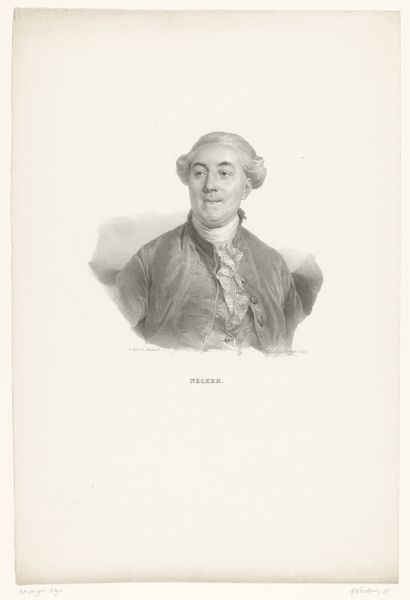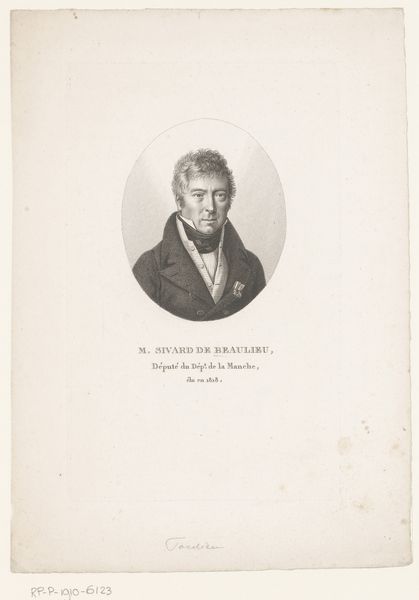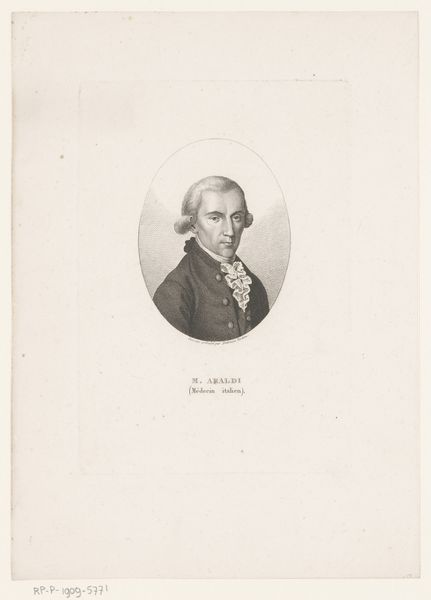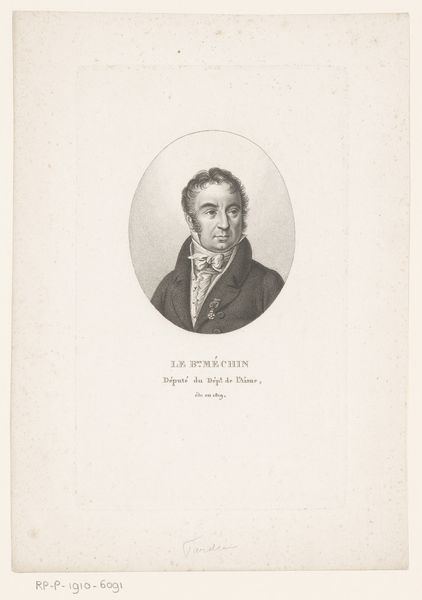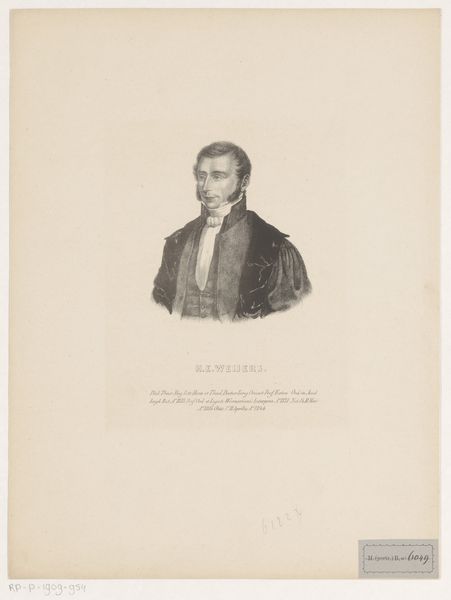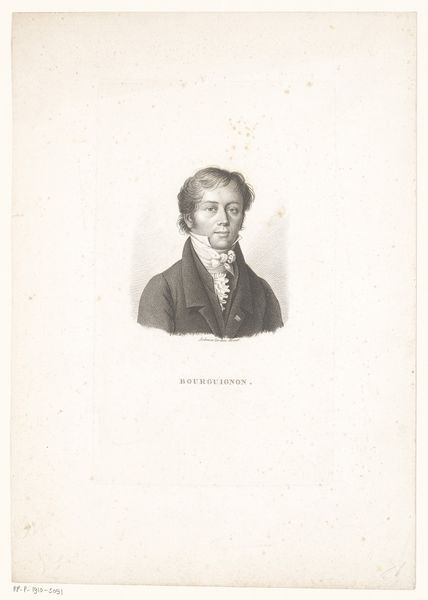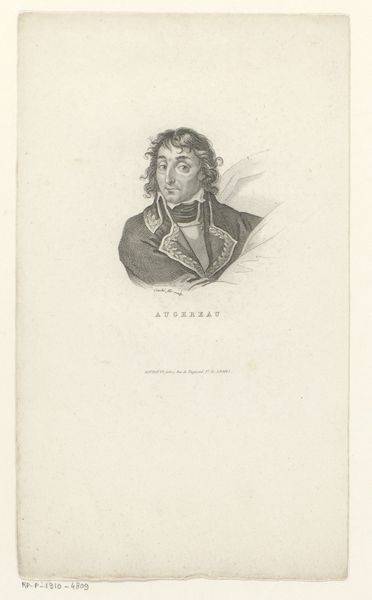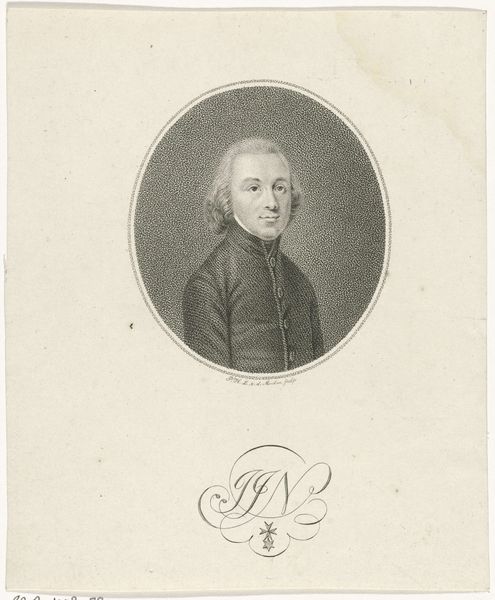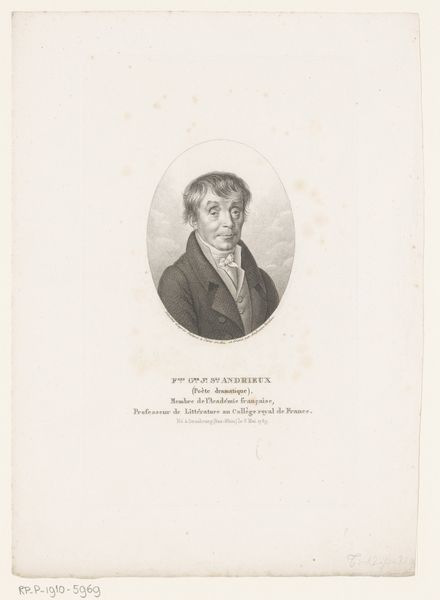
engraving
#
portrait
#
neoclacissism
#
academic-art
#
engraving
Dimensions: height 227 mm, width 150 mm
Copyright: Rijks Museum: Open Domain
This is Charles Aimé Forestier's portrait of Xavier Bichat. Its precise date isn't known, but it was made using engraving, a process involving sharp tools to incise an image onto a metal plate, which is then inked and printed. The material of the plate, likely copper, allowed for fine lines and details. Look closely, and you'll notice how the density of these lines creates shading and volume, defining Bichat's features and clothing. The labor-intensive process, requiring skill and precision, speaks to the value placed on accurate representation during this period. Engraving also had a social function. It was a key method of reproducing images for wider circulation, democratizing access to portraits and information. Unlike a unique painting, this print could be multiplied, making Bichat's likeness accessible to a broader audience. The print’s existence reflects the burgeoning print culture, where artistry met industry. By understanding the materials, processes, and social context, we appreciate how this print bridges the gap between fine art and functional craft.
Comments
No comments
Be the first to comment and join the conversation on the ultimate creative platform.

